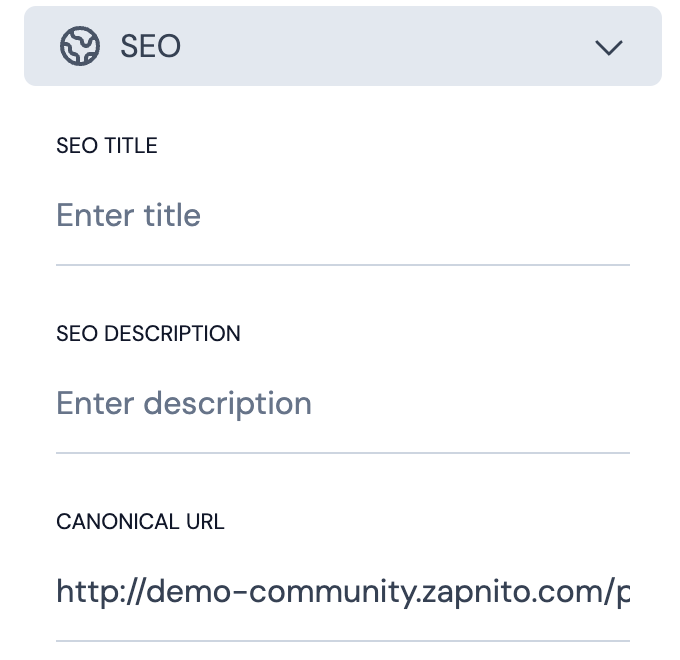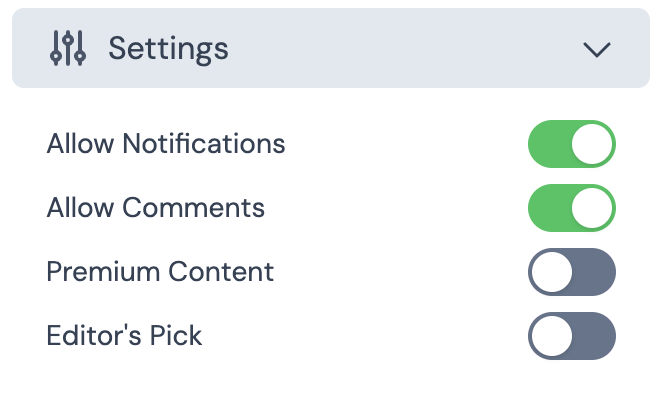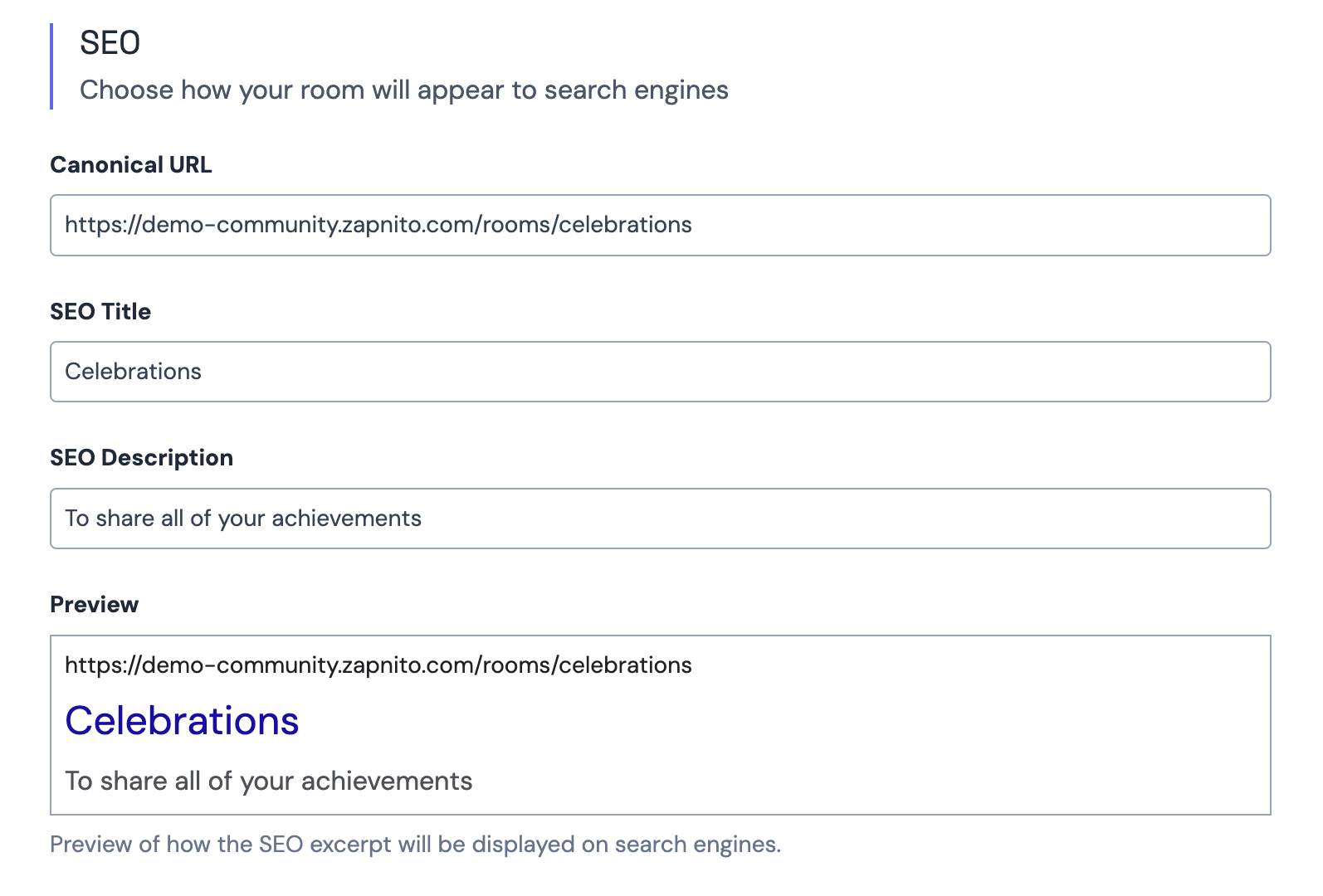SEO settings and Zapnito

This article provides an overview of the conditions under which your web search engine will be able to index your site and its content; it contains the following sections:
The site itself
If your site is closed, nothing on the site will be tracked and indexed by Google. This includes people in directories, the site’s content, as well as the different Rooms and Channels.
Often, Zapnito sites that have not yet launched are set as 'Closed access' sites. Once the site is ready for launch, you will have the option of keeping it 'Closed access' or making it open. Should you choose to have an 'Open Access' site, the site itself and its content will be trackable by search engines.
You are able to view whether your site is closed or open in the top-right corner of your site's registration settings page.
'Open Registration' is a separate setting that allows users to register to your site. If your site is not open for registration, users will have to be invited to it before they can access the site and its contents.

Sections within the site
Static pages, the Q&A page, directories, courses, and open rooms in 'Open Access' sites are all indexed by Google and therefore appear as search results. The content and conversations that exist within open rooms are also indexed.
On the other hand, private rooms are not. This is also the case for hidden profiles. Should a user’s profile be hidden, the user will not appear in your site’s directory, and will therefore not be tracked by a web search engine.
You can view whether your site allows profiles to be hidden in the bottom-left corner of the registration settings page.

Content and the authoring page
On the right-hand side of the authoring page of a post, video or document, there is a SEO tag with three available fields:

The SEO title allows you to change the title that appears in the tab at the top of your browser. You might do this if you have an abstract title and want the SEO title to more accurately describe the content of the article. This title tag is also tracked by Google so try to add keywords that will make your content more searchable.
The SEO description is the equivalent of the introduction to your content. Similar to the SEO title, this should be used to write a more succinct keyword-driven description of your work. Often, this is picked up by Google as the blurb on the search results page. However, this depends on which search terms are used.
The canonical URL should be used if you’ve copied the content wholesale from another site. For example, if you have copied a blog from your personal site to your Zapnito site, then you should paste the URL of your personal site in the canonical URL box. This is so that Google will recognise that these two pages as one piece of work, rather than duplications which often get penalised.
The canonical URL should also be used when duplicating content within the same site. For example, if you wanted to add a piece of content to more than one Room, you would have to create it twice. When creating the second post, it is important that you reference the first using the canonical URL box.
Lastly, when you are writing a piece of content, you will also notice that you have the option, under Settings, to make the content 'Premium'. Although the body of a premium piece of content is not indexable by Google, its title and introduction are. This means that premium content will also appear as a Google search result. However, only users who have registered to your site will be able to view it.

Static pages
The SEO title, SEO description and canonical URL, as described in 'content and the authoring page', are settings that also exist when you create a static page.
These determine how your pages are tracked by your search engine, so it is advisable that you make these as relevant as possible so that your users can more easily find them. This is especially important if you are using a static page to host an event on your community, for example.

In much the same way as with 'Premium Content', you have the option of ticking the box 'Sign-in required to view'. This will only allow users who have registered to your site to view and access the page.
To learn more about how to set-up your site's terms pages, check out our guide.
Rooms
The SEO title, SEO description and canonical URL, as described in 'content and the authoring page', are settings that also exist when you create a room.
These determine how your rooms are tracked by your search engine, so it is advisable that you make these as relevant as possible so that your users can more easily find them.

Channels
The SEO title, SEO description and canonical URL, as described in 'content and the authoring page', are settings that also exist when you create a channel.
These determine how your channels are tracked by your search engine, so it is advisable that you make these as relevant as possible so that your users can more easily find them.

If you have any questions, please don't hesitate to get in touch with us at support@zapnito.com.




To access please sign in or register for free
If you are a registered user on Zapnito Knowledge Hub, please sign in
@Helen T following our catch up yesterday, I wanted to tag you in this as I thought it might be helpful